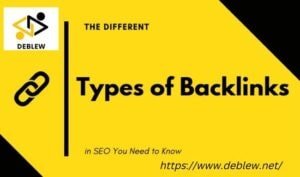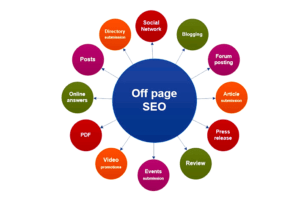The Comprehensive Guide to White Hat SEO Link Building
In the dynamic world of digital marketing, staying ahead of the curve is essential for success. When it comes to enhancing your website’s visibility and driving organic traffic, White Hat SEO link building emerges as a strategic cornerstone.
In this guide, we will delve into the intricacies of White Hat SEO link building, exploring its significance, strategies, best practices, and future trends.
Fundamentals of White Hat SEO Link Building
In the intricate web of search engine optimization (SEO), link building stands as a crucial pillar that can significantly influence a website’s visibility and authority. However, not all links are created equal.
In this section, we will unravel the essentials of White Hat SEO link building, highlighting the importance of various types of links and distinguishing ethical practices from their less-savoury counterparts.
Understanding Links and Their Significance
The internet is interconnected by an intricate network of links, each serving as a pathway connecting one webpage to another. Links come in three primary flavours, each playing a distinct role in shaping a website’s SEO strategy:
Inbound Links (Backlinks)
These are the links from external websites that direct users to your site. Backlinks act as digital endorsements, indicating to search engines that your content is valuable and authoritative. The quality and relevance of backlinks can significantly impact your site’s credibility and search engine ranking.
Outbound Links
Outbound links are those that lead from your website to external sources. While these links provide additional context and resources for your readers, they also signal search engines about your content’s credibility and willingness to contribute to the broader online conversation.
Internal Links:
Internal links connect different pages within your website. They enhance the user experience by guiding visitors to related or relevant content, promoting deeper exploration of your site. Additionally, internal links help search engines understand the hierarchy and structure of your website.
Link Juice and PageRank
The concept of Link Juice and PageRank plays a pivotal role in the link-building landscape. Link juice refers to the equity or authority transferred from one page to another through hyperlinks. When an authoritative website links to your content, it passes on a portion of its credibility, positively impacting your site’s overall authority.
PageRank, once a dominant algorithm developed by Google’s founders Larry Page and Sergey Brin, quantified the importance of web pages based on the quantity and quality of inbound links they received. While Google no longer publicly updates PageRank, the concept remains relevant as an indicator of a webpage’s influence.
Differentiating White Hat from Black Hat and Gray Hat Techniques
In the vast realm of SEO, strategies can be broadly classified into three categories: White Hat, Black Hat, and Gray Hat.

Brief Explanation of Black Hat and Gray Hat SEO
Black Hat techniques involve aggressive and often unethical practices to manipulate search engine rankings. This may include tactics like keyword stuffing, cloaking, and buying low-quality backlinks. While these methods might yield quick results, they risk severe penalties from search engines and damage to a website’s long-term credibility.
Gray Hat techniques fall somewhere in between White Hat and Black Hat. They often push the boundaries of ethical practices without fully crossing into unethical territory. While these methods may offer short-term gains, they also carry inherent risks and are generally discouraged in favour of more sustainable strategies.
White Hat techniques embody ethical and sustainable practices that prioritize long-term success and user value. White Hat link-building focuses on acquiring high-quality, relevant backlinks from authoritative sources through genuine relationship-building, quality content creation, and community engagement.
Ethical and Long-Term Nature of White Hat SEO
The ethical and long-term nature of White Hat SEO ensures that your website’s authority and search engine rankings are built on a solid foundation. Unlike their more aggressive counterparts, White Hat strategies provide lasting benefits that withstand shifts in search engine algorithms and promote genuine user engagement.
In the subsequent sections of this guide, we will delve into the specific strategies and best practices that define effective White Hat SEO link building, empowering you to elevate your website’s online presence while maintaining the integrity of your brand.
Identifying High-Quality Link Building Opportunities
In the pursuit of bolstering your website’s authority and search engine ranking, it’s essential to meticulously identify and seize high-quality link-building opportunities. This involves a multifaceted approach that includes evaluating your existing backlinks, identifying potential toxic links, and harnessing insights from competitor analysis. This section will equip you with the tools and strategies to navigate these crucial steps effectively.
Conducting a Link Audit and Analysis
Evaluating Existing Backlinks
Embarking on a link audit entails a comprehensive examination of the backlinks pointing to your website. This process not only provides a snapshot of your current link profile but also uncovers opportunities for improvement. Leverage tools like Google Search Console, Ahrefs, or Moz to compile a list of your existing backlinks.
Analyze factors such as the authority and relevance of linking domains, anchor text distribution, and the diversity of link sources. Identifying your strongest and weakest links is a crucial step in optimizing your link-building strategy.
Identifying Toxic or Low-Quality Links
Not all backlinks are beneficial; some may be detrimental to your website’s SEO. It’s imperative to identify and disavow toxic or low-quality links that can negatively impact your search engine ranking. Utilize tools like Google’s Disavow Links tool to communicate to search engines which links you want them to disregard.
Toxic links may include those from link farms, spammy directories, or irrelevant websites. By actively removing or disavowing these links, you can maintain a healthy and authoritative link profile.
Competitor Analysis and Link Prospecting
Tools and Strategies for Competitor Analysis
Your competitors can offer valuable insights into potential link-building opportunities. Identify your main competitors in your niche and analyze their backlink profiles using tools like Ahrefs, SEMrush, or Moz’s Link Explorer. Pay attention to the types of websites linking to them, the anchor text used, and the overall quality of their links.
By understanding your competitors’ link-building strategies, you can glean inspiration for your efforts and uncover hidden gems within your niche.
Finding Link Building Opportunities from Competitors
Competitor analysis extends beyond observation; it involves actively capitalizing on their successes. Identify websites that are linking to your competitors but not to you. Reach out to these websites and present compelling reasons why they should also consider linking to your content.
Moreover, explore unexploited content gaps in your niche that your competitors have not covered. By creating valuable, unique content on these topics, you can position yourself as an authoritative source and attract natural backlinks.
By mastering the art of link audit and competitor analysis, you lay the groundwork for a targeted and effective link-building strategy. In the subsequent sections of this guide, we will delve into specific white hat link-building strategies that leverage these insights to propel your website’s authority and visibility to new heights.
Effective White Hat Link-Building Strategies
When it comes to White Hat SEO link building, adopting ethical and sustainable strategies is paramount. This section unveils a range of proven techniques that will not only elevate your website’s search engine ranking but also foster genuine connections within your niche.
Guest Posting and Blogger Outreach
Identifying Relevant and Authoritative Blogs
The art of guest posting lies in selecting blogs within your niche that hold authority and resonate with your target audience. Prioritize websites with a strong readership and engaged community. Look for blogs that align with your expertise and values.
Crafting Compelling Outreach Pitches
Successful outreach begins with a well-crafted pitch. Tailor your outreach emails to each recipient, highlighting your expertise and how your proposed guest post will benefit their audience. Showcase your knowledge, provide topic ideas, and demonstrate your commitment to delivering high-quality content.
Content Creation and Promotion
Creating Link-Worthy Content
Crafting exceptional content is the cornerstone of link-building. Develop comprehensive, informative, and visually appealing content that adds value to your readers’ lives. Invest in research, data, and visual elements that make your content stand out.
Promoting Content to Attract Natural Backlinks
Even the most remarkable content requires promotion. Share your content on social media platforms, relevant forums, and industry-specific communities. The more eyeballs your content reaches, the higher the likelihood of attracting organic backlinks from those who find your content valuable.
Broken Link Building
Identifying Broken Links on Relevant Websites
Broken link building involves finding broken links on authoritative websites within your niche. Use tools like Check My Links or Ahrefs to identify broken links on pages that align with your expertise.
Outreach to Site Owners for Replacement with Your Content
Reach out to the webmasters of these sites, alerting them to the broken links and suggesting your content as a replacement. Provide them with a clear and concise explanation of how your content can fill the gap and enhance their readers’ experience.
Influencer Partnerships and Collaborations
Leveraging Influencer Relationships for Link Building
Identify influencers within your niche whose endorsement can boost your credibility. Engage with their content, build a rapport, and establish a genuine relationship.
Co-Creation of Content and Resource Sharing
Collaborate with influencers on content creation, such as joint blog posts, videos, or webinars. This partnership not only enriches your content but also exposes it to a wider audience, leading to natural backlinks and increased visibility.
Social Media Engagement for Link Building
Sharing Content and Engaging with the Community
Actively share your content on social media platforms and engage in discussions related to your niche. By becoming a valuable contributor to these conversations, you can attract attention and potentially secure organic backlinks.
Building Relationships with Niche Influencers
Cultivate relationships with influencers through meaningful interactions on social media. Comment on their posts, share their content, and demonstrate your expertise. Over time, these relationships can lead to organic link opportunities.
These white hat link-building strategies combine authenticity, quality, and relationship-building to foster sustainable growth. By diversifying your approach and nurturing meaningful connections within your industry, you lay the foundation for a robust link profile that not only enhances your search engine ranking but also positions you as a trusted authority within your niche.
On-Page Optimization for Effective Link Building
A well-structured and optimized website plays a pivotal role in link-building efforts. In this section, we’ll delve into the art of on-page optimization, focusing on internal link structure and anchor text optimization, both of which contribute significantly to your website’s search engine ranking and user experience.
Optimising Internal Link Structure
Importance of Internal Linking for SEO
Internal links are not just navigation tools; they also serve as pathways that guide search engine crawlers through your website’s content. These links establish a hierarchical structure that helps search engines understand the relationships between different pages and their relative importance.
Best Practices for Internal Link Optimization
- Relevance and Context: Ensure that internal links are relevant to the content they are embedded within. Link to pages that provide additional value and context to the reader.
- Anchor Text: Use descriptive and natural anchor text that accurately reflects the destination page’s content. Avoid generic phrases like “click here” and instead opt for anchor text that succinctly describes the linked content.
- Hierarchy and Structure: Organize your internal links hierarchically to create a logical flow of information. Guide users through related topics and encourage them to explore further.
- Avoid Overloading: While internal linking is beneficial, avoid overloading a page with too many links. Maintain a balance that enhances user experience without overwhelming readers.
Anchor Text Optimization
Relevance and Variation in Anchor Texts
Anchor text is the visible, clickable text that forms a hyperlink. It plays a crucial role in conveying the context and relevance of the linked content. When optimizing anchor text:
- Relevance: Choose anchor text that accurately reflects the topic of the linked page. It should provide a clear indication of what the user can expect when they click the link.
- Variation: Use a variety of anchor texts throughout your website to create a natural link profile. Overreliance on the same anchor text can appear manipulative and may trigger search engine penalties.
Avoiding Over-Optimization and Spammy Practices
- Keyword Stuffing: Avoid stuffing your anchor text with keywords. It should read naturally and provide value to the user.
- Exact Match Anchor Text: While using exact match anchor text occasionally is acceptable, avoid excessive use, as it can come across as unnatural and may raise red flags with search engines.
- Link Farms and Low-Quality Sites: Refrain from linking to low-quality websites or participating in link farms, as these practices can negatively impact your site’s credibility.
By optimizing your website’s internal link structure and anchor text usage, you create a user-friendly navigation experience and establish valuable connections between your content. As we proceed through this guide, we’ll explore additional facets of white hat SEO link building, further enhancing your understanding and skill set in this ever-evolving field.
Earning Links Through Authority and Expertise
Establishing authority and expertise within your niche is a powerful approach to naturally attract high-quality backlinks. In this section, we’ll explore techniques that position you as a thought leader and foster genuine connections through active engagement in online communities and forums.
Building Thought Leadership
Creating Authoritative and Expert Content
Thought leadership is founded on the creation of content that showcases your deep understanding of your field. Craft comprehensive, well-researched articles, blog posts, videos, or infographics that provide valuable insights and solutions to industry challenges. This content should address current trends, and emerging issues, and offer innovative perspectives.
Becoming a Trusted Source in Your Niche
- Consistency: Regularly publish authoritative content that consistently demonstrates your expertise over time. Consistency reinforces your reputation as a reliable source of information.
- Citing Data and Research: Back your content with credible data and references. This not only enhances your credibility but also encourages other reputable sources to link back to your content.
Participating in Online Communities and Forums
Contribution to Discussions and Providing Value
- Choose Relevant Platforms: Identify online communities, forums, and discussion boards that are relevant to your niche. Platforms like Reddit, Quora, or industry-specific forums provide opportunities to share your expertise.
- Engage Authentically: Participate in discussions, answer questions, and provide valuable insights without overtly promoting yourself. Focus on genuinely helping others and contributing to meaningful conversations.
- Link to Your Content Sparingly: When appropriate, share links to your relevant content within your responses. Ensure that the link adds value to the discussion and helps answer the question at hand.
Gaining Recognition and Natural Backlinks
- Earning Respect: Consistent valuable contributions lead to recognition within the community. Others are more likely to reference and link to your content when they perceive you as an authoritative figure.
- Organic Link Building: As your contributions gain traction, other members may naturally reference your content in their own discussions or blog posts, leading to organic backlinks.
By building thought leadership and actively engaging in online communities, you position yourself as a reputable source of information and attract natural backlinks from those who value your insights. As we progress through this guide, we will delve deeper into advanced white hat SEO link-building strategies that leverage your authority to further enhance your website’s visibility and influence.
Monitoring and Measuring Link Building Success
As you embark on your white hat SEO link-building journey, it’s essential to have a robust monitoring and measurement system in place. This ensures that your efforts are yielding the desired results and informs your strategies for continuous improvement. In this section, we’ll delve into the tools and key performance indicators (KPIs) that help you gauge the effectiveness of your link-building endeavours.
Utilising SEO Tools for Link Tracking
Google Search Console and Other Analytics Platforms
Google Search Console offers valuable insights into your website’s performance in search results. It provides data on the number of backlinks, linking domains, and keywords that drive organic traffic. Additionally, tools like Google Analytics offer comprehensive website analytics, including referral traffic and user behaviour.
Third-Party Link Tracking Tools
Utilize third-party tools like Ahrefs, Moz, SEMrush, or Majestic to gain deeper insights into your backlink profile. These tools offer features such as tracking new and lost backlinks, analyzing anchor text distribution, and monitoring competitors’ link-building strategies.
Tracking Key Performance Indicators (KPIs)
Domain Authority, Page Authority, and Trust Flow
These metrics provide an overview of the quality and authority of your website and individual pages. Domain Authority (DA) and Page Authority (PA), as calculated by Moz, indicate the likelihood of your website or page ranking well in search results. Trust Flow, from Majestic, measures the credibility of your backlink profile.
Organic Traffic and Conversion Rate
Link building’s ultimate goal is to drive organic traffic and conversions. Monitor the increase in organic traffic to the pages you’ve built links to. Additionally, track the conversion rate of visitors from these pages to assess the quality of the traffic.
Tracking these KPIs not only provides insights into your link-building performance but also guides your optimization efforts. As your link profile grows and you implement various strategies, you can use these metrics to identify successful tactics and refine your approach.
In the subsequent sections of this guide, we will delve into strategies for avoiding common white hat link-building mistakes, explore future trends in the SEO landscape, and conclude with a comprehensive summary that reinforces the importance of ethical and sustainable practices in white hat SEO link building.
Avoiding Common White Hat Link Building Mistakes
In the pursuit of enhancing your website’s authority and visibility, it’s essential to navigate the white hat link-building landscape with precision and care. This section sheds light on common mistakes that can undermine your efforts and offers guidance on how to steer clear of them.
Focusing Solely on Quantity Over Quality
One of the most prevalent errors in link building is prioritizing the number of backlinks over their quality. While a high number of backlinks might seem appealing, it’s crucial to remember that not all links are created equal. A massive influx of low-quality or irrelevant backlinks can harm your site’s credibility and trigger search engine penalties.
How to Avoid This Mistake:
- Selective Outreach: Focus on building links from authoritative and relevant websites within your niche. Each link should serve as a valuable endorsement of your content.
- Quality Content: Craft high-quality, informative, and valuable content that naturally attracts authoritative backlinks. Focus on creating content that people genuinely want to link to.
Neglecting Proper Outreach and Relationship Building
Effective link-building extends beyond transactional interactions. Neglecting proper outreach and relationship-building can hinder your ability to secure valuable backlinks. A lack of personalization in your outreach efforts can result in ignored or rejected requests.
How to Avoid This Mistake:
- Personalized Outreach: Tailor your outreach emails to each recipient, demonstrating genuine interest in their website and highlighting the mutual benefits of a link exchange.
- Cultivate Relationships: Prioritize relationship-building over one-off link acquisition. Engage with influencers, bloggers, and webmasters in a meaningful way that fosters trust and rapport.
Ignoring Link Diversity and Relevance
A diverse and relevant backlink profile is vital for a well-rounded link-building strategy. Focusing solely on a single type of link or neglecting relevance can lead to an unnatural and potentially penalized link profile.
How to Avoid This Mistake:
- Varied Link Sources: Seek backlinks from a variety of sources, including guest posts, mentions, citations, and editorial links. A diverse link portfolio appears more natural to search engines.
- Relevance: Ensure that the websites linking to you are contextually relevant to your content. Irrelevant links can dilute your site’s authority and confuse search engines.
Over-Optimization and Manipulative Tactics
White hat link-building centres on ethical practices and authenticity. Engaging in over-optimization, keyword stuffing, or manipulative tactics can lead to severe consequences, including search engine penalties and a tarnished reputation.
How to Avoid This Mistake:
- Natural Anchor Text: Use anchor text that is contextually relevant and reads naturally within the content. Avoid excessive use of keywords or over-optimization.
- Focus on User Value: Prioritize creating content that genuinely benefits your audience. Avoid creating content solely to gain backlinks.
By steering clear of these common white hat link-building mistakes, you pave the way for an effective, sustainable, and ethical approach to enhancing your website’s authority and search engine ranking. As we approach the conclusion of this guide, we will explore future trends in white hat SEO link building, shedding light on the evolving landscape of search engine optimization.
Future Trends in White Hat SEO Link Building
The world of search engine optimization is continually evolving, driven by advancements in technology, changing user behaviours, and evolving search engine algorithms. As you strive to master white hat SEO link building, it’s essential to stay attuned to the emerging trends that will influence the way websites are ranked and authoritative backlinks are earned.
The Evolution of Search Engine Algorithms
Search engines, led by giants like Google, are in a constant state of refinement. As the algorithms evolve, they become more sophisticated in identifying and rewarding high-quality, authoritative content. In the realm of link building, this means that search engines will continue to prioritize natural, organic backlinks from reputable sources.
What to Anticipate:
- Quality Over Quantity: The emphasis on quality backlinks will intensify. Search engines will become better at distinguishing between valuable, relevant links and manipulative tactics.
- Contextual Relevance: Algorithms will increasingly focus on the context in which links are placed. Links within content that naturally aligns with the linked page’s topic will carry more weight.
Growing Importance of User Experience and Engagement
User experience and engagement metrics have been gaining importance in search engine ranking factors. As search engines strive to provide users with the most relevant and valuable results, websites that deliver exceptional user experiences will be rewarded.
What to Anticipate:
- User-Centric Signals: Metrics like bounce rate, dwell time, click-through rate, and mobile-friendliness will influence rankings. Websites that keep users engaged and satisfied will be favoured.
- Content Depth and Quality: Comprehensive, in-depth content that addresses user needs and queries comprehensively will be prioritized. Engaging content that captures and holds users’ attention will stand out.
Integration of Artificial Intelligence and Machine Learning
Artificial intelligence (AI) and machine learning are poised to revolutionize SEO and link building. These technologies can analyze vast amounts of data, identify patterns, and make real-time adjustments to search rankings.
What to Anticipate:
- Enhanced Link Evaluation: AI-powered algorithms will assess link quality, relevance, and authority more accurately, making it harder to manipulate rankings.
- Predictive Analytics: Machine learning can anticipate trends and shifts in user behaviour, helping SEO professionals adjust their strategies proactively.
As the landscape of white hat SEO link building evolves, embracing these trends will be crucial for maintaining a competitive edge. By adhering to ethical practices, prioritizing user experience, and leveraging emerging technologies, you can position yourself for long-term success in the dynamic world of search engine optimization.
Conclusion
White Hat SEO link building is not merely a tactic but a holistic approach to establishing online authority and credibility. By understanding the fundamental principles, employing effective strategies, and staying attuned to industry shifts, you can navigate the ever-changing landscape of SEO. Embrace ethical practices, prioritize user experience, and adapt to emerging trends to secure a sustainable and prosperous online presence.






